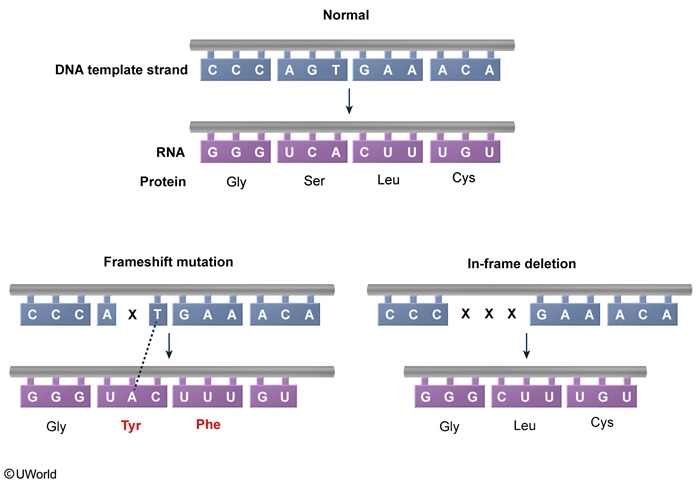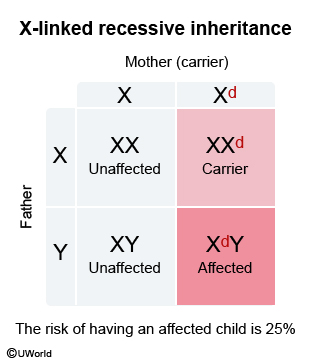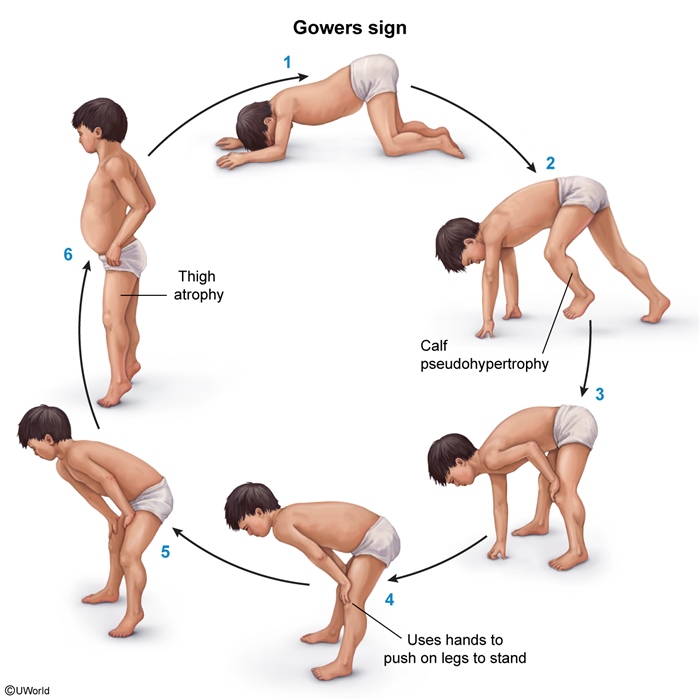Duchenne And Becker Muscular Dystrophy
Article Sections
Introduction
Duchenne muscular dystrophy (DMD) and Becker muscular dystrophy (BMD) are X-linked recessive disorders characterized by progressive muscle weakness due to a dystrophin gene mutation. DMD is a more severe form (absent dystrophin) that presents in toddlers, whereas BMD (reduced dystrophin) usually presents in adolescence.
Pathogenesis
DMD and BMD are X-linked recessive disorders caused by a mutation in the dystrophin gene. Dystrophin is part of a glycoprotein complex associated with the sarcolemma of muscle fibers (primarily skeletal and cardiac muscle). It links intracellular cytoskeleton components to transmembrane proteins within the sarcolemma, providing mechanical stability. With reduced or absent dystrophin, proteases disrupt the sarcolemma, promoting calcium entry into the cell and myonecrosis.
Muscle breakdown manifests as progressive weakness (which affects proximal muscles first), and fibrofatty connective tissue subsequently replaces the degrading muscle (
Continue Learning with UWorld
Get the full Duchenne And Becker Muscular Dystrophy article plus rich visuals, real-world cases, and in-depth insights from medical experts, all available through the UWorld Medical Library.
Figures


